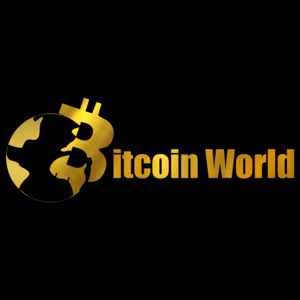US China Tariffs: Bessent’s Stark Warning on Future Rates
7 min read
In the often unpredictable world of global finance and geopolitics, events thousands of miles away can send ripples through markets, including the cryptocurrency space. Recent comments from US Treasury Secretary Scott Bessent regarding US China Tariffs are a prime example. While seemingly focused on traditional trade, these statements carry weight for anyone tracking the pulse of the Global Economy and its potential impact on risk assets like Bitcoin and Ethereum. Understanding the Current Stance on US China Tariffs According to a report shared by Walter Bloomberg on X, US Treasury Secretary Scott Bessent recently weighed in on the ongoing trade dynamics between the United States and China. His remarks offer a clear, albeit firm, perspective on the future trajectory of tariff rates. Bessent described the recent tensions as an “unfortunate escalation,” highlighting the continued complexity of the relationship. However, he also pointed to the existing Phase One Trade Deal as having provided a “useful framework.” This suggests that while tensions exist, there’s still a basis for structured engagement, even if that framework is currently being tested or adapted. The key takeaway from Bessent’s comments centers on the future levels of tariffs: Current Levels as a Floor: Bessent emphasized that the current tariff levels applied to Chinese goods represent a floor. This means the US is unlikely to lower them further. April 2 Rates as a Ceiling: Conversely, the higher tariff rates that were in effect on April 2 are seen as a potential ceiling. This implies that while current rates are the minimum, the US reserves the right to increase them up to those higher levels if deemed necessary. Unlikely to Drop Below 10%: A specific figure was mentioned: it is unlikely that tariffs will drop below 10%. This sets a clear expectation for businesses and markets. Option to Revert: Bessent explicitly stated that the U.S. retains the ability to revert to the April 2 levels if circumstances warrant. This positioning signals a firm stance from the US side, indicating that significant tariff reductions are not on the table in the near term, and the possibility of increases remains a tool in the trade relationship. What Were the Tariff Levels Being Discussed? The reference to current rates and April 2 levels points to specific adjustments that have been in play. The current arrangement, described as temporary (set for 90 days), involved reciprocal tariff reductions: Party On Goods From Previous Rate Temporary Rate Duration China U.S. 125% 10% 90 days U.S. China 145% 30% 90 days Bessent’s comments suggest that the 10% temporary rate applied by China on US goods, and likely the 30% rate applied by the US on Chinese goods, are now considered the minimum acceptable levels from the US perspective, with the potential to return to significantly higher rates like 125% or 145% (or similar levels from April 2) if the temporary arrangement expires or tensions escalate. Why Does This Matter for the Global Economy and Beyond? Trade relationships between the world’s two largest economies have profound implications far beyond their borders. The state of US China Tariffs directly impacts global supply chains, manufacturing costs, inflation, and overall economic growth. Uncertainty surrounding these tariffs can dampen business investment and consumer confidence worldwide. For the Global Economy , stable and predictable trade is crucial. Tariffs act as taxes on imported goods, making them more expensive for domestic consumers and businesses. This can lead to: Higher prices for goods (inflation). Reduced demand for imported products. Companies relocating production to avoid tariffs, disrupting established supply chains. Retaliatory tariffs from the other country, further escalating costs and reducing export markets. These economic ripple effects contribute to market volatility. When the traditional financial markets (stocks, bonds, commodities) react to trade tensions, it often spills over into the cryptocurrency market, which is increasingly sensitive to macroeconomic shifts and investor sentiment regarding risk. A Brief Look Back: The Origins of the Modern Trade War The recent era of significant Trade War tensions between the US and China didn’t appear out of nowhere. It largely escalated during the Trump administration, driven by concerns over trade deficits, intellectual property theft, and market access. The US imposed tariffs on billions of dollars worth of Chinese goods, prompting China to retaliate with its own tariffs on American products. This period saw significant market disruption and uncertainty. Businesses struggled to adapt to changing costs and supply routes. While the initial tariffs were framed as necessary to correct perceived imbalances, they also drew criticism for potentially harming American consumers and businesses reliant on imports. Evaluating the Phase One Trade Deal : A Useful Framework? The Phase One Trade Deal , signed in January 2020, was intended to de-escalate some of these tensions. Key components included: China agreeing to increase purchases of US goods and services (specifically targeting agriculture, energy, manufactured goods, and services). Commitments from China on intellectual property protection, technology transfer, and currency practices. A reduction in some US tariffs on Chinese goods, while others remained in place. The establishment of a dispute resolution mechanism. While Secretary Bessent called it a “useful framework,” its effectiveness has been debated. China fell short of meeting its purchase commitments, particularly during the pandemic. Many of the structural issues remained unresolved, and tensions have continued to simmer, leading to the current situation where the possibility of reverting to higher tariffs is openly discussed. The deal provided a temporary pause but did not fundamentally alter the competitive and often confrontational nature of the US-China economic relationship. What Challenges and Potential Opportunities Lie Ahead? Challenges: Escalation Risk: The most significant challenge is the potential for the Trade War to intensify. If the US reverts to higher tariffs, China is likely to retaliate, creating a negative feedback loop that harms both economies and the Global Economy . Supply Chain Disruption: Continued tariff uncertainty encourages companies to diversify away from China, a process known as ‘decoupling’ or ‘de-risking’. While this can build resilience in the long term, the transition is costly and disruptive in the short to medium term. Inflationary Pressures: Higher tariffs mean higher import costs, which can contribute to inflation, a major concern for central banks and consumers globally. Market Volatility: Geopolitical and trade tensions are major drivers of market volatility, impacting stocks, commodities, and cryptocurrencies as investors react to uncertainty. Opportunities: Diversification: The pressure to diversify supply chains creates opportunities for other countries to attract manufacturing and investment. Innovation: Competition can spur innovation as countries seek to gain technological advantages. Potential for Future Negotiation: While Bessent’s comments are firm, the reference to a ‘framework’ and the definition of a ‘ceiling’ (rather than an immediate increase) leaves the door slightly ajar for future negotiations, potentially leading to a more stable, albeit still competitive, relationship down the line. Analyzing Scott Bessent ‘s Commentary As US Treasury Secretary, Scott Bessent ‘s words carry significant weight. His clear articulation of the tariff floor (unlikely below 10%) and ceiling (April 2 levels) serves multiple purposes: Setting Expectations: It manages expectations for both China and global markets, signaling that the US is not planning unilateral tariff reductions. Signaling Firmness: It reinforces the US administration’s resolve on trade issues and the willingness to use tariffs as a tool. Maintaining Leverage: By stating the ability to revert to higher levels, the US maintains leverage in future discussions or in response to perceived unfair trade practices from China. Providing Limited Clarity: While firm, defining a floor and ceiling provides slightly more clarity than open-ended uncertainty, which can be marginally helpful for businesses trying to plan. His comments should be seen in the context of ongoing strategic competition between the two powers, where economic policy is often intertwined with national security and geopolitical objectives. Actionable Insights for Navigating Trade Tensions Given the potential for continued volatility driven by US China Tariffs and the broader Trade War dynamics, what can businesses and investors do? Stay Informed: Pay close attention to official statements from both US and Chinese officials, trade negotiation updates, and economic data releases. Assess Supply Chain Risk: Businesses should evaluate their reliance on imports/exports affected by potential tariffs and explore diversification strategies. Monitor Market Reactions: Observe how traditional markets (especially sectors heavily involved in US-China trade like technology, manufacturing, and agriculture) react to news, as this often foreshadows broader market sentiment that can affect crypto. Consider Portfolio Resilience: For investors, understanding that macro factors like trade wars influence asset prices is crucial. While crypto has unique drivers, it’s not immune to global economic shifts. Diversification and risk management remain paramount. Look for Sector-Specific Impacts: Some industries within crypto might be more sensitive than others if trade tensions impact specific technologies or manufacturing processes related to mining hardware, chip production, etc. Compelling Summary US Treasury Secretary Scott Bessent has drawn a line in the sand regarding US China Tariffs , indicating that current reduced rates are likely the floor, with no intention of dropping below 10%, while the higher April 2 rates represent a potential ceiling the US could revert to. These comments underscore the persistent tensions in the Trade War and signal a firm US stance. The implications for the Global Economy are significant, affecting supply chains, inflation, and overall market stability. For those tracking markets, including the volatile world of cryptocurrency, understanding these macroeconomic headwinds is essential. While the Phase One Trade Deal offered a temporary framework, the path forward remains uncertain, requiring vigilance from businesses and investors alike as they navigate the complexities of this critical international relationship. To learn more about the latest Global Economy trends and how geopolitical factors like the Trade War are shaping markets, explore our articles on key developments impacting the financial landscape.

Source: Bitcoin World



